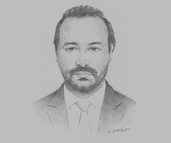Ahmed Benyahia, CEO, Holding Générale de l’Education: Interview

Interview: Ahmed Benyahia
What characterises the relationship between the private and public education sectors?
AHMED BENYAHIA: Since 1995 we have seen a huge shift in the number of students entering private schools, from approximately 7% in 1995 to 17% in 2018, an increase of roughly 1m. This is largely a response to deficiencies in the public education system. Realistically, both sectors would benefit from a closer partnership. The public education sector is characterised by expertise and first-hand knowledge, and the Ministry of Education is resourceful. However, many challenges need to be addressed in terms of efficiency and rapidity. In contrast, the private sector is dynamic and highly adaptable, with a willingness to integrate new technologies and innovations. Both sides would benefit from each other’s feedback, but unfortunately there is no bridge between the two to help encourage constructive exchanges.
How has the private school sector evolved?
BENYAHIA: Advances in the sector have been uneven and cut along two distinct trends, namely, international schools and private bilingual schools under the direction of the Ministry of National Education. It is mainly French, Belgian, US and UK international schools that have evolved, mostly due to the demands of their clientele. Parents who send their children to these schools are characterised by high expectations and a substantial level of accountability, both of which push foreign missions to constantly improve their offerings.
The last four to five years in particular have seen a significant acceleration in the quality of education and infrastructure at international schools. This is because of market saturation caused by the number of new schools entering the market. French international schools, which for a long time enjoyed a monopoly, now have to compete with other schools of the same type. For example, there are three US international schools in Casablanca alone, with a combined total of roughly 2500 students, and these institutions have at least one other school in every other major city in Morocco. This increased availability means that parents have a multitude of choices, and so schools have to compete to draw their enrolment. Private bilingual schools have also seen a boom in demand over the last decade. In an effort to differentiate themselves from one another, some operators have invested in infrastructure, competences and commercial offerings. The reality right now, however, is that there is a saturation of that slice of the market, with the offer far exceeding demand.
It is also important to highlight that many of the private schools were founded in the mid-1990s by retired teachers and are now in the midst of a generational shift. Succession in the education business is often defined by either commitment and improvement or disinterest and disappearance. Thus, the sector is in a period of restructuring, whereby some schools are in crisis and suffering from low enrolment, which will lead to a contraction in terms of market offerings.
What other trends have been shaping the market?
BENYAHIA: From the perspective of both parents and schools, we have seen changes. While not universally true, there has been a realisation among many households that education can act as a stepping stone to improved social status. This notion is especially prominent in large urban areas like Casablanca, Marrakech and Rabat. In other regions the attitude is still that education is not the only way to climb the social ladder, and that a child who stops school at the age of 15-16 can succeed. In addition we are seeing an increase in the level of interest in schools, especially from foreign funds. Some providers are realising that with the right structure, effective management can be put in place and successfully replicated in other branches, thus attracting investment for expansion. Making the transition from focusing solely on pedagogy to a structure that can develop human resources, finance and marketing departments is key to attracting that investment.
You have reached the limit of premium articles you can view for free.
Choose from the options below to purchase print or digital editions of our Reports. You can also purchase a website subscription giving you unlimited access to all of our Reports online for 12 months.
If you have already purchased this Report or have a website subscription, please login to continue.

